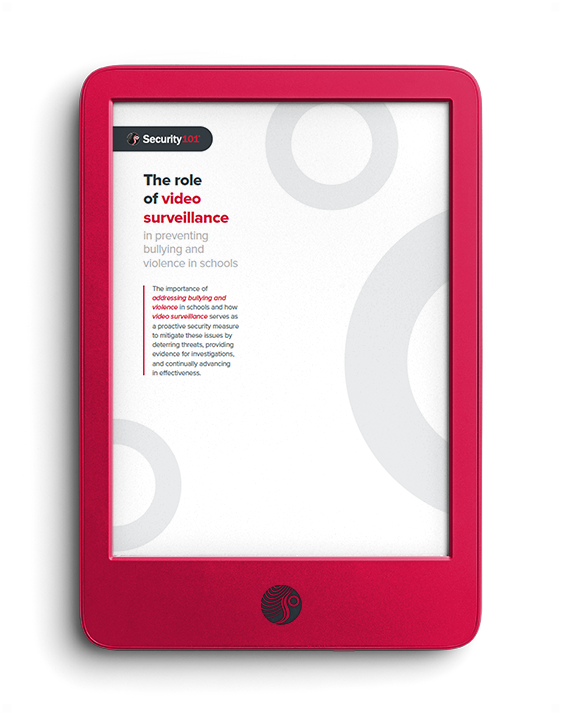The role of video surveillance
in preventing bullying and violence in schools
The role of video surveillance in addressing bullying
The whitepaper emphasizes the importance of addressing bullying and violence in schools and explores how video surveillance can help prevent such incidents by providing enhanced security measures and tangible evidence, highlighting the evolving role of video surveillance in ensuring a secure learning environment.
Common challenges faced by K-12 schools
K-12 schools face multifaceted challenges, including bullying and violence, which impact students' well-being and academic performance, alongside issues like substance abuse and mental health. Addressing these challenges requires comprehensive strategies, including evidence-based interventions and advanced technologies, to create a safe and conducive learning environment where students can thrive academically, emotionally, and socially.
Understanding bullying
Bullying, defined as intentional, repeated aggression with a power imbalance, occurs in various forms including physical, verbal, and psychological, and can transpire in school, online, or in other settings, resulting in long-term harm for victims. K-12 schools combat bullying through policies, open communication, anti-bullying programs, increased supervision, and staff training. Victims may suffer physical health issues, mental health problems, academic decline, low self-esteem, social isolation, and long-term effects into adulthood.
Types of violence in K-12 schools
Violence in K-12 schools takes various forms, including physical altercations, verbal abuse, cyberbullying, sexual violence, emotional/psychological violence, and racial/ethnic violence. Schools address these issues through disciplinary measures, conflict resolution strategies, education on digital citizenship, Title IX obligations, counseling, and support services. Ensuring educator well-being involves comprehensive safety protocols, open communication, conflict resolution resources, and violence prevention training.
Bullying and violence in schools
Bullying and violence in schools are pervasive issues requiring urgent attention. Statistics from sources like the NCES and YRBSS reveal alarming rates: 20% of students report being bullied, and 6% experience cyberbullying. Physical violence is also prevalent, with 8% of high school students involved in fights on school property. These data underscore the urgent need for preventive measures and emphasize the importance of creating safe and inclusive school environments for all students.
Understanding the positive role of video surveillance
Video surveillance has become indispensable in preventing bullying and violence in K-12 schools. Its advanced features, including facial recognition and real-time monitoring, offer proactive solutions for ensuring safety. Benefits include deterring harmful behavior, collecting evidence for investigations, enabling swift interventions, enhancing overall security, and protecting school property. These systems also promote a culture of respect and adherence to conduct rules among students, contributing to a secure and conducive learning environment.
Implementing and advanced video surveillance solution
Implementing advanced video surveillance in K-12 schools involves key steps: conduct a security audit, select suitable equipment, strategically place cameras, perform regular maintenance, and provide staff training. These measures enhance security, promote a safe learning environment, and deter threats, fostering a conducive atmosphere for education.
Privacy concerns
Implementing video surveillance in schools faces challenges including privacy concerns, budget limitations, and technological constraints. Privacy worries can be addressed with transparent policies and restricted camera placement. Budget constraints may be mitigated by seeking funding alternatives and opting for scalable solutions.
Technological challenges
Technological challenges can be managed by investing in reliable systems with good support and providing regular staff training. Addressing these challenges ensures the successful implementation of surveillance systems, enhancing safety and security in schools.
Join us in creating safer learning environments for students and staff
Our comprehensive whitepaper explores the challenges faced by educational institutions and outlines the positive impact of implementing advanced surveillance systems.
Get My Free Whitepaper
Get the free whitepaper now!
Unlock the potential of video surveillance in helping tackle bullying and violence in K-12 schools

Get the free whitepaper now!Unlock the potential of video surveillance in helping tackle bullying and violence in K-12 schools |


